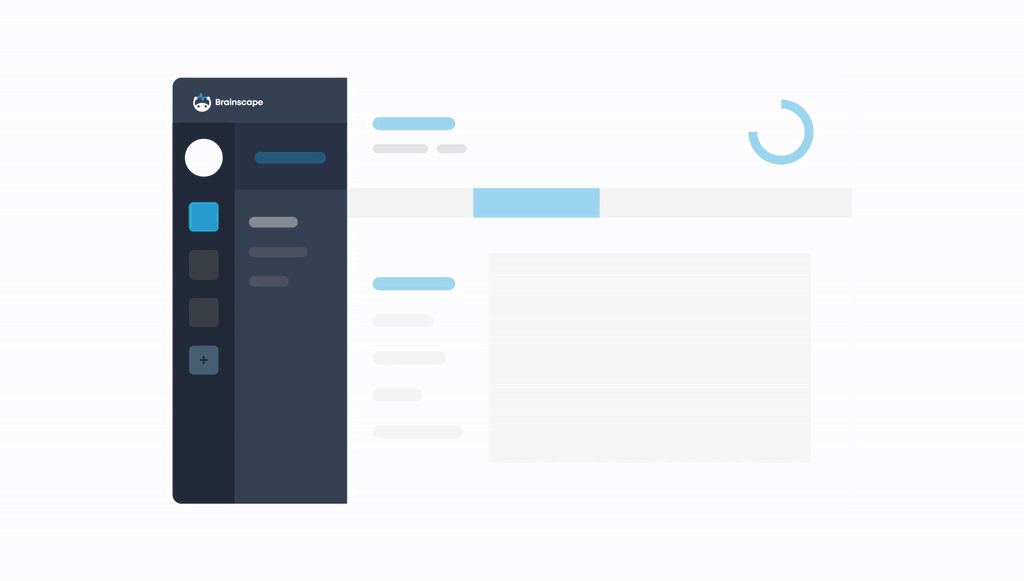There are many ways to learn a new language: taking a class, speaking with your friends from Madrid, hiring a Chinese tutor, or just watching old French movies with subtitles. But there's another method that will take your learning to the next level: reading!
Reading is one of the best ways to learn a language, even from very early on in your learning journey. We at Brainscape have spent a ton of time learning how you can best master a foreign language using reading as part of an overall suite of activities.
We spent years building our own "certified" foreign language learning curricula—starting with our adaptive French flashcards and Spanish flashcards. We not only developed a groundbreaking method for learning languages faster using spaced repetition, but also a model for what an ideal language learning journey should include.
[Discover our complete toolkit to learn a language online.]
For example, we've already discussed how useful it is to practice speaking a foreign language. It's a much better practice activity than simply watching TV/movies, since the former provides the learner with an adjustable pace, a stronger incentive to pay attention, and a greater chance of receiving corrective feedback.
But learning a language isn't only about speaking.
In this post, we will explain why reading is the best way to learn a language and will give you 6 tips for how to involve reading in your language learning.
The importance of reading a foreign language
Reading in a foreign language helps us become more comfortable with the words and grammatical rules that enable us to express our own thoughts, just like reading in one’s native language. Seeing the text of new words and concepts visually helps to reinforce our memory of them, while having the ability to stop, think, or look up words in a dictionary allows for more individualized pace of mental absorption.
Reading at even a slow pace also exposes us to more sentences per minute than the average movie or TV show. (Just think of all the pauses, transitions, and action scenes where characters are not speaking.) This is exactly the reason why heavy readers of just English tend to speak more articulately than average English speakers, despite theoretically having had the same number of years of exposure to the language.
Being exposed to a larger “brain feed” of vocabulary and grammar simply trains you to use your language better in your own speech. So, without further ado, let's dive into the tips for for finding and using good foreign-language reading materials!
6 Tips for reading in a foreign language efficiently

Tip 1. Start basic and small
Children’s books are great practice for beginners, as are software programs with short sentences or passages that allow you to listen to accompanying audio. (Try “Charlotte’s Web” in Spanish, or the BBC’s “Learn French” series.) Don’t try to dive into a novel or newspaper too early, since it can be discouraging (or might take too long to constantly look up every word you see!).
Tip 2. Choose material you’ve already read in your language
Even if you last read something 15 years ago, the fact that you at least know the gist of it will help you tremendously to pick up context clues and implicitly learn new vocabulary and grammatical constructions. Otherwise, if you get lost in a new story in a foreign language, it is difficult to recover. For example, if you've already read Harry Potter, try reading it again in Mandarin.

Tip 3. Read books with their accompanying audiobooks
Reading just a single book while listening to the accompanying audio—even if you don’t understand everything completely—will dramatically improve your “ear training” and habituate you to the general speed and cadence of a native speaker. Alternatively, using an audiobook alone (if you are a beginner) risks completely missing certain words that you might have otherwise recognized. So, try reading a book with their accompanying audio book to make sure you don't miss any vocab or grammar structures.
Watching TV or movies with closed-captioning in the native language can sometimes be a decent substitute as well, but be careful: most captions fail to mimic the spoken lines word-for-word, which can result in a confusing audiovisual disconnect.
And even in cases where the text and audio are in sync (particularly in slowly-spoken documentaries), remember that the use of pauses and other audio-free visual effects reduces the words-per-minute exposure of screen versus print. If you want the most efficient word-feed for your brain, audiobooks paired with their original text provide the best practice possible.
Tip 4. Read content aligned to your level
Speaking of vocabulary and grammar, the difference between reading in a foreign language versus your native language is, naturally, that you began reading your native language once you were already speaking it fluently. But if you're a beginner in a foreign language you don’t quite have that luxury. The challenge is therefore finding foreign-language reading materials that are commensurate with your level of vocabulary and grammar.
- If you're at a beginner level, read social media posts, short, easy articles, or children’s books.
- If you're at an intermediate level, read books you’ve already read and short news articles.
- If you're at an advanced level, read books, articles, or other native texts that interest you.
You should aim for texts that are challenging but not overwhelming.
Tip 5. Use an adaptive spaced repetition tool like Brainscape
Reading is great but you can't just pick up a book and expect to learn everything you need to know from it. Most language learning practices are best used in combination with others, like the right foreign language app.
Brainscape is best language app out there (science says so!). It's a flexible, adaptive flashcard app that helps you learn vocab and grammar twice as quickly as you would doing traditional exercises. It uses spaced repetition, which is a language learning algorithm that shows your most difficult concepts more often than the easier ones, thereby optimizing your learning process. The faster you learn the grammar and vocab, the more reading you'll be able to understand!

Brainscape's certified foreign language programs expand your vocabulary and grammar knowledge through thousands of digital flashcards that are deliberately ordered from the "most critical" concepts to the "most mundane", so that you're using your language-learning time most efficiently.
Tip 6. Make digital flashcards for every new word you find
Flashcards aren't just handy for learning before your start reading materials, but also during your reading. When you come across a new and unfamiliar phrase or word, you can make your own flashcards using Brainscape. Once you add a flashcard to your deck, it automatically become part of your language learning process. This is way more effective that reading a new word, looking it up, and forgetting mere minutes later.

Create your own language learning journey
Reading is definitely one of the best ways to learn a language. But like we said before, reading on its own will not get you to a fluent level. Instead, we've discovered that a variety of practices and tools are best used together to really advance your learning.
If you check out our complete toolkit for learning a foreign language online, you will learn how to construct a journey that works for you. Perhaps you need a tutor and some well-chosen books and movies. Or maybe you're more adventurous and will travel to your chosen country to practice speaking with natives.
And don't forget, even the best-constructed journey will fail if you don't have the right motivation to learn a foreign language.
Good luck!
References
BBC. (2008, January 30). Talk French - A video introduction to French. https://www.bbc.co.uk/languages/french/talk/
International Center for Language Studies. (2024, July 30). How to improve your reading skills while learning a second language. International Center for Language Studies. https://www.icls.edu/blog/how-to-improve-your-reading-skills-while-learning-a-second-language
MandarinX. (2022). MandarinX. https://www.mandarinx.com/
McGee, C. (2022, May 5). The benefits of reading in a foreign language - A thousand lives - medium. Medium. https://medium.com/a-thousand-lives/the-benefits-of-reading-in-a-foreign-language-d5a994c68210
San Diego Ear, Nose, & Throat Specialists. (2023, April 9). How Auditory Training Can be Improved by AudioBooks. https://www.dentmd.com/hearing-loss-articles/audiobooks-important-part-auditory-training/
Sanchez, J. (2020, March 29). La Telaraña de Carlota - Capítulo 1 [Video]. YouTube. https://www.youtube.com/watch?v=j8kq08u3tVA
